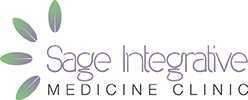Now that the tests have been run and the diagnosis confirmed… What next?
We are relieved to say there are many highly effective treatments to support the detoxification and healing from Mold-related illness / Mycotoxicity. The treatments are targeted to both alleviate symptoms, such as brain fog, fatigue, achy joints, and the long list of those seen in Mast Cell Activation Syndrome (MCAS) and Chronic Inflammatory Response Syndrome (CIRS) (see Part 1) and of course to ultimately eliminate these pervasive biotoxins from the body.
Before we dive into the treatments, it is important to point out that people must deal with their environment. It is critical that one is not still being continually exposed to the offending agents. Many people continue to live in water damaged homes that have not been remediated properly or move with belongings that are contaminated, therefore contaminating their new space. It is critical that ongoing exposure is mitigated as much as possible. It is very difficult for people to get well if they are still in a “sick home.”
Detoxification
Many people who are genetically prone to developing mold-related illness upon exposure may be genetically susceptible thus having compromised detoxification pathways. Genetic mutations in MTHFR or impairment in glutathione production, two of our main detoxification pathways, can make one prone to illness. In such people there may be higher than average toxin burden and the mold exposure may be the last drop in a very full toxin bucket. Checking your genes with a program such as Strategene is a great tool to guide treatment. A skilled clinician can help you decipher these reports to optimize treatment recommendations.
For starters simple factors that support detoxification:
- Drink 8 glasses of organic filtered water daily,
- Eat organic fruits and veggies and organic / grass fed meats
- High sulfur veggies like broccoli / cauliflower/ cabbage are particularly beneficial
- Liver supportive herbs such as dandelion, milk thistle, artichoke, turmeric
- Amino acids such as N-Acetyl Cysteine and Methionine
- Methylation support nutrients Methylated B 12, Folate, B6 and Choline
- Liposomal Glutathione and Alpha lipoic acid
- Vitamin C
- Eating lots of fiber
- Intermittent fasting – allowing the body time between meals to work on processing and not just digesting
Sauna Therapy (such as Infrared or Conventional)
Twenty to thirty minutes, several times per week will really speed up the detoxification process. This is a fantastic way to help mobilize stored toxins to excrete through the skin and lymphatic system. It is clear in our clinical experience that patients who find a way to sweat regularly start feeling better more quickly. Another alternative for those who do not have access to a sauna are warm epsom salt baths, soak for 20 minutes then wrap up and sweat as long as possible.
Binders
Once toxins are mobilized from their hiding places throughout our body- it is important to get them out of the body asap.
- Binders such as Activated Charcoal, Zeolite, Pectin, or Cholestyramine are very helpful to patients struggling with mycotoxins
Daily Bowel movements
If digestion is slow or sluggish it is important to get it going to support the elimination of toxins: Adding lots of fiber, a good quality probiotics, magnesium, and even coffee enemas can be helpful.
Opening up the detox pathways is our number one goal, if mold is aggressively treated and people can not adequately detox they may feel worse than before they started.
To be Continued in How to Treat Toxic Mold Part 3
